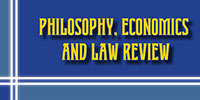Yuliia HALENKO, Joris KAZLAUSKAS
HALENKO Y., KAZLAUSKAS J. (2023), TEACHING A NATIVE LANGUAGE AS A FOREIGN ONE: METHODS, APPROACHES AND EXPERIENCE OF UKRAINE AND THE REPUBLIC OF LITHUNIA. PHILOSOPHY, ECONOMICS AND LAW REVIEW. Volume 3, no. 1, 70-80
DOI: 10.31733/2786-491X-2023-1-70-80
ABSTRACT. This article studies different peculiarities of teaching native languages as foreign ones while working with foreign students. The research was performed by survey among the teachers of the discipline “Ukrainian as a Foreign Language” at Dnipropetrovsk State University of Internal Affairs, studying works by Ukrainian authors in the corresponding topic and watching methods of teaching Lithuanian language applied by teachers from Vytautas Magnus University (Kaunas, Republic of Lithuania) during the intensive Lithuanian language course undergone by the article author. In terms of the research conducted the most popular and efficient methods and approaches to teaching Ukrainian as a foreign language at higher educational institutions of Ukraine were summarized and described. In his turn, my coauthor described the methods and principles of teaching Lithuanian language at the largest
and oldest university of Lithuania Vytauto Didžiojo universiteto reflecting nationwide approach to teaching a native language working with foreign students.
Besides, the article considers development perspectives in teaching native languages as foreign ones both in Ukraine and worldwide in the upcoming decades due to the intensification of education internationalization, raise of interest towards national cultures of other countries, the tendency of preserving local culture and traditions in terms of the parallel globalization as well as actual internal and external processes.
The article suggests encountering changes in global and local tendencies of teaching national languages and transformation of the national self-awareness in countries forced to follow stranger’s culture and speak the stranger’s language within a particular historical period. Moreover, the statuses of national languages as well as minor languages in a number of countries are undergoing active changes, which are directly connected with choosing a language of studies and teaching at the national level. Requirements to study at a national language must be respected by international students, who choose another country to receive higher education abroad. Considering this, teachers of all disciplines without any exceptions should start introducing English language aspect in delivering specialized disciplines in parallel to teaching their subjects in Ukrainian language. Simultaneously, Ukrainian language teachers, who want to work with foreign students, shall review their personal approach to teaching with the aim of enhancing available methods and active application of efficient approaches at delivering “Ukrainian as a Foreign Language” discipline to be able to work with international students.
Keywords: foreign language, native language, Ukrainian as a foreign language, methods of teaching, approaches to teaching, national language status.
References
- Bakum, Z. (2010). Ukrainska mova yak inozemna: linhvodydaktychni problem [Ukrainian as a Foreign Language: Linguadidactic Problems], Filolohichni studii: Naukovyi visnyk Kryvorizkoho derzhavnoho pedahohichnoho universytetu, 5, pp. 226-232. [in Ukr.].
- Business Bliss Consultants FZE. (2018). Native Language in Foreign Language Learning. URL : https://ukdiss.com/examples/thoughtful-way-to-use-learners-mother-tongue-in second-language-teaching.php?vref=1.
- Council of Europe. (2020). Common European Framework of Reference for Languages: Learning, teaching, assessment – Companion volume, Council of Europe Publishing, Strasbourg. URL : www.coe.int/lang-cefr.
- Krashen, S. (1982). Principles and practice in second language acquisition. Shelest, H. (2018). Vyvchennia ukrainskoi movy yak inozemnoi: problemy, novi metodyky, perspektyvy [Learning Ukrainian as a Foreign Language: Problems, New Methodologies, Perspectives], Uzhorod : Vydavnychyi dim “Helvetyka”. Zakarpatski filolohichni studii, 1 (3), pp. 51-55. [in Ukr.].
Statistics and Data: “The Most Spoken Languages 2022”. URL : https://statisticsanddata.org/data/the-most-spoken-languages-2022/. - Turkevych, O. (2012). Metodyka vykladannia ukrainskoi movy yak inozemnoi: systemna orhanizatsia terminiv [Methods of Teaching Ukrainian as a Foreign Language: Systematic Organization of Terms], Visnyk Natsionalnoho universytetu “Lvivska politekhnika”. Seriia “Problemy ukrainskoi terminolohii”, no. 733, pp. 223-226. [in Ukr.].
- Vyselko, A. (2016). Vykladannia ukrainskoi movy yak inozemnoi za metodykoiu zanurennia [Teaching Ukrainian as a Foreign Language through Immersion], Materialy III mizhnarodnoi naukovo-metodychnoi konferentsii “Aktualni pytannia orhanizatsii navchannia inozemnykh studentiv v Ukraini” (18-20 travnia 2016 roku), pp . 159-163. [in Ukr.].
